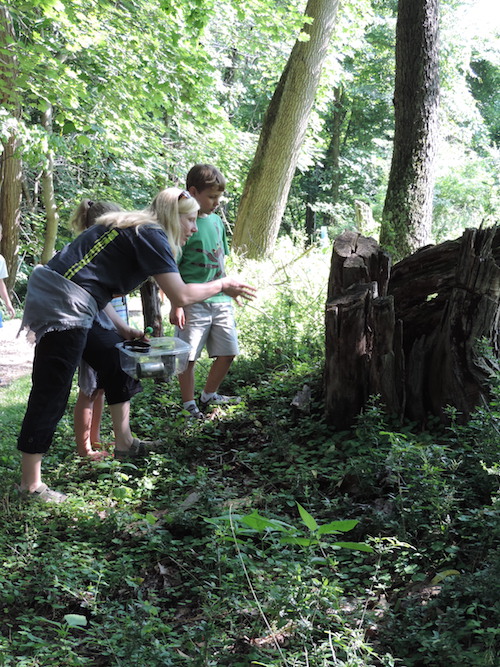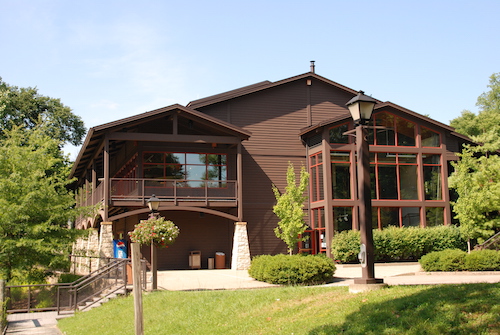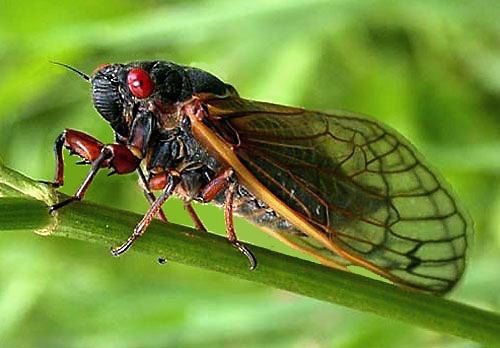Schrader Center Nature Educators Separate Cicada Facts from Fiction and Teach Kids What All The “Buzz” Is About
Most years as the weather warms, we look forward to spending time outdoors. This year is a bit different. The massive cicada brood that has been living underground for the past 17 years is hatching, filling the skies and trees and making a lot of noise.
For many, these red-eyed root suckers are the stuff of science-fiction nightmares. But for nature and science lovers, their appearance is a very interesting phenomenon and nature at its most wondrous.
We can learn a lot from these little bugs, says Alice Eastman, director of Oglebay Institute’s Schrader Environmental Education Center. That’s why she and her staff of nature educators are planning a special week-long camp focusing on these interesting creatures.
The Crazy for Cicadas Summer Nature Day Camp takes place June 13-17 for kids in grades 4-6 and aims to separate the facts from fiction.
“Since campers weren’t alive when these critters last emerged in our area 17 years ago, kids are naturally curious about them and are eager to find out what all the ‘buzz’ is about,” Eastman said. “This biological phenomenon can be seen, heard and felt and is a perfect opportunity to engage kids in the study of life cycles.”
Eastman concedes that loud buzzing can be annoying and the crunch of outer shells underfoot can be unnerving. “But most kids aren’t afraid of gross stuff,” she joked. “In fact, for some kids, the grosser, the better.”
The scientific name for the 17-year cicadas is Magicicada septendecim, which literally means “magic bug 17.” The name is fitting, Eastman says, because “the emergence of the periodic cicadas is one of the greatest spectacles of the insect world. It’s magical!”
Their life cycle is amazing and tragic. The periodical cicada begins life hatching from an egg attached in the bark of a tree and drops to the ground, where they burrow deep into the earth and live feeding on the juices from plant roots. After 17 years of this, the nymphs emerge in tremendous numbers on warm spring evenings and climb to high places where they shed their shells, spread their wings and begin a new phase as flying insects. They sing, mate, lay eggs and die – all in the course of about six weeks. The entire population will be gone in a couple months.
Why do they spend so much time underground? How do they know when to emerge?
“There are many theories and evidence to support theories, but we don’t know for sure. The mystery and magic is part of the appeal and at the heart of scientific investigation,” Eastman explained. “Expect to see the largest emergence after the temperature gets above about 72 for a week. That means the soil temperature is in the mid-60s. Perfect for emergence.”
Children in the camp will explore these mysterious creatures and other insects by looking for exoskeletons, eggs and adults, comparing cicadas to other insects, participating in cicada calling contest and maybe some cook-offs, but only if the kids are willing! They’re actually a great source of protein!
While you may be tempted to stay indoors during late May and June to avoid the cicadas, Eastman encourages you to get outside and observe their emergence, but do so without a leaf blower.
She avoids the term “invasion” because cicadas aren’t invaders. “They are native, and they serve as a food source for fish, birds and snakes. They may be annoying, but they don’t really cause much damage. It’s recommended you wrap small shrubs and newly planted trees with netting until the cicadas are gone. Tiny thin branches are the best place for cicada eggs so mature trees will have no problem with the brood. They don’t destroy crops. They don’t bite or sting. However, be aware that when you mow your grass or use power tools outside, cicadas will think you are rather adorable and swarm you. Power tools make noise at the same frequency as cicadas looking to mate. While they are a powerful reminder of the endless cycles of nature, they won’t return until 2033.”

Eastman encourages parents to teach children about this rare, natural phenomenon that is occurring in our area. “We hope to see lots of kids in our Crazy for Cicadas nature camp. For those who can’t attend, we hope they will learn more about these fascinating creatures at home.”
Here is a good resources where you can learn more: http://www.magicicada.org/magicicada_2016.php.

